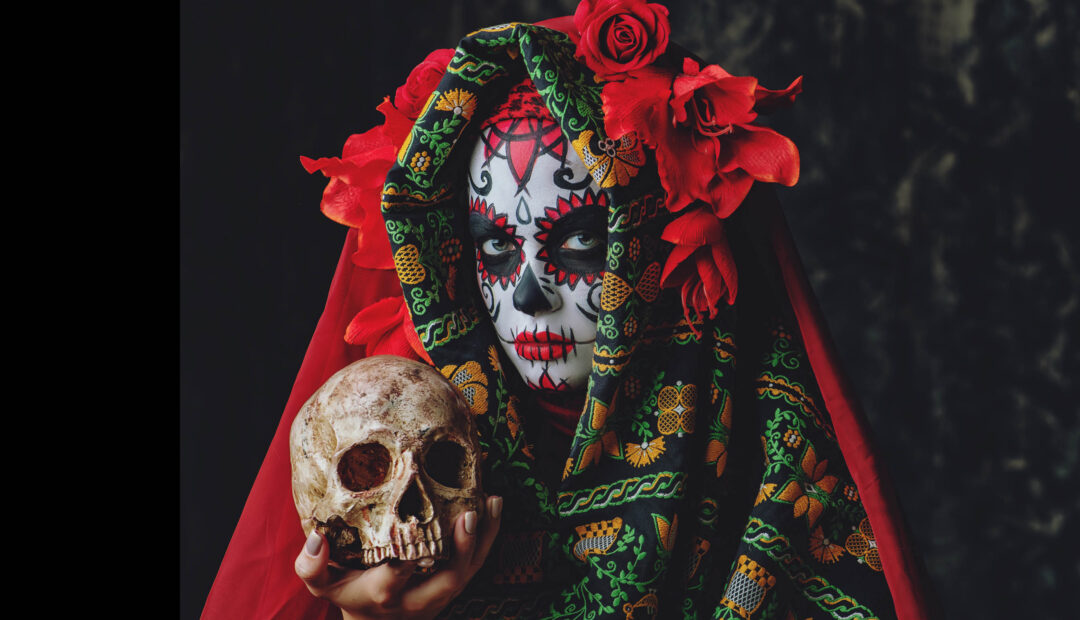Halloween is celebrated in the United States, United Kingdom, Ireland, Australia and other places. However, many countries around the world have their own ways of celebrating, and not just on October 31. Here’s what “halloween” celebrations look like around the globe. The version of Halloween we celebrate today in the U.S. is largely derived from an amalgamation of various cultural traditions.
Dia de Los Muertos – Latin America
In Latin America, kids do not go trick-or-treating on October 31. There, on November 1st, festivities and parties are held to celebrate the “Day of the dead” or “Dia de los muertos.” This celebration honors passed loved ones in Mexican families and is intended to unite the living with the dead. It originated from the Aztecs, an indigenous group living in the Mexico region who had spiritual beliefs that death and living were closely entwined. As Latin America endured years of colonization and Catholic-rule, the tradition of honoring passed loved ones merged indigenous values with Catholic values to become what it is today. On November 1st, families honor deceased children, and on November 2nd, deceased adults. Altars are built to connect with these spirits, flowers and colorful paper decor are hung in public spaces and homes, parades are held, beautiful handmade costumes are worn as song and dance honor the spirits’ memories.
Guy Fawkes Day – United Kingdom
Though Halloween has increased in popularity in the United Kingdom over the years, every year on November 5th, they also have their own special autumnal celebration. What at first may sound like a funny name has a very historically relevant backstory. The day commemorates the attempted assassination of King James I (son of Mary Queen of Scots) by a man named Guy Fawkes in 1605. “Attempted” is the key word here. Fawkes and a group of English Catholic cronies planned to kill the king by blowing up the Parliament building, a scheme that has since been dubbed “the Gunpowder Plot.” However, the plan went wrong when a member of parliament received an anonymous letter tipping them off. To celebrate the failed plan, Protestant English citizens who revered the king celebrated by setting off fireworks and having bonfires. A tradition which still continues today on Guy Fawkes Night or Bonfire Night.
Ognissanti – Italy
Similar to Dia de los muertos, Italy has the tradition of Ognissanti or “All Saints” every year on November 1st. According to Real Italiano, this Christian tradition dates back to the 4th century, however back then it was celebrated in the spring season, and was only changed to November 1st by Pope Gregory III in the 8th century. This tradition is celebrated in various ways in Italy’s many regions. For example, in Sardinia, some children essentially go trick-or-treating, going door to door in their neighborhoods asking for a gift to give to the dead, while in Abruzzo pumpkin lanterns are carved by families. On the following day, Italians celebrate All Souls’ Day, which primarily honors the dead through the decoration of loved ones’ graves. Some cities may hold parades, and children often dress up as their favorite saints, and it wouldn’t be Italy without food! On these occasions, special foods like pumpkin risotto and roasted chestnuts are prepared.
Samhain – Ireland and Scotland
Ireland and Scotland’s medieval landscapes and architecture make it easy to believe that they have the most witchy and Halloween-y traditions. Samhain is actually the true origin of Halloween in the United States, and it is still celebrated today in Ireland and Scotland. According to the National Museum of Ireland, in ancient times, Samhain marked the beginning of winter on November 1st. Hallowe’en was the night before Samhain, October 31st. It is also known as the Feast of All Saints, an evening of feasting, game-playing, and celebrating the reuniting of the dead with the living. Samhain was originally a pagan festival from ancient Celtic spiritual tradition, according to History.com. Because the later part of the year was dark and cold, the belief was that humans could more closely communicate with the spirit world at this time. Oftentimes, on this evening children and men would run around trying to scare their neighbors in scary masks and disguises, and so began the tradition of costume wearing on Halloween!
What Halloween destination is on your must visit list?


